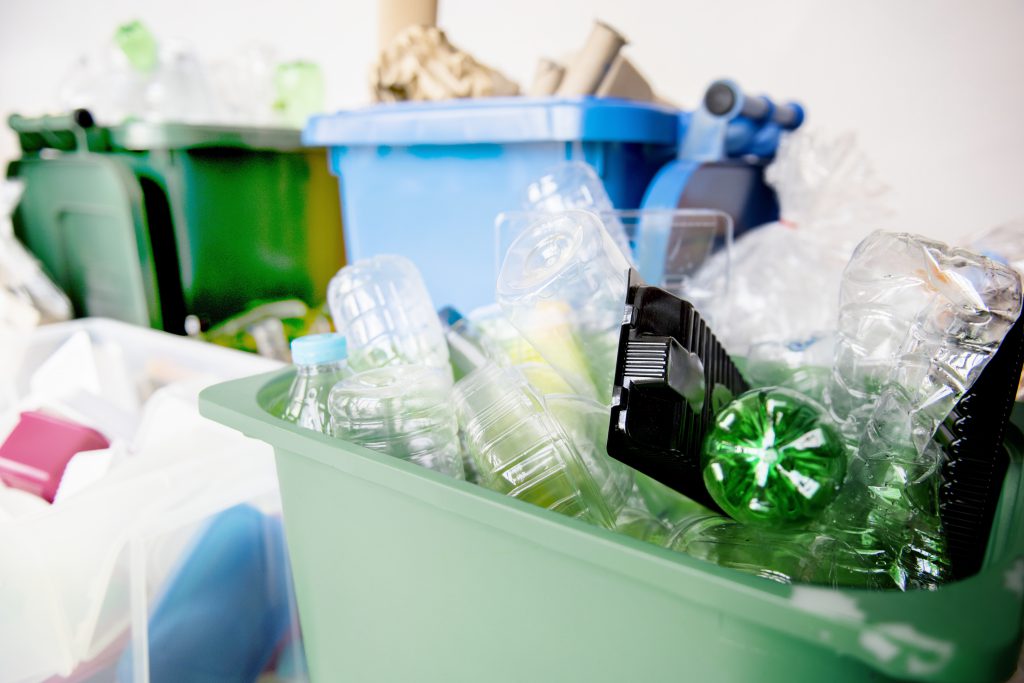ISWA and WMW presented the virtual event Rethinking Waste: The Global Resource Expo and Forum. Topics ranged from waste management to closing dumpsites and recycling. A common thread in the presentations and panels was how the issue of household waste management must move away from traditional solutions like landfills. When ranking waste management options, governments, industries, and individual organizations look to the waste hierarchy model which lays out a path for responsibly managing the waste we produce.
What is the Waste Hierarchy?
The waste hierarchy prioritizes its pyramid by what is best for the environment. That it’s often referred to as the recycling pyramid is a bit misleading, as recycling appears further down the list of priorities. What’s number one? Prevention, which is followed by preparing for reuse, recycling, other recovery, and disposal.
- Prevention or source reduction includes using less material in design and manufacturing, holding onto or using products for longer, and using less hazardous materials.
- Preparing for reuse is cleaning, refurbishing, and repairing of spare parts or whole items.
- Recycling covers different methods used to turn waste into a new substance or product.
- Other recovery includes things like anaerobic digestion and incineration used to produce energy and other materials.
- Disposal is landfill dumping and incineration without energy recovery.
Waste Management Hierarchy
We know that waste management is an extremely complex issue, and no single approach is suitable for managing all materials and waste streams. Most experts agree, though, that source reduction or prevention is the most environmentally preferred strategy. Source reduction takes many forms including:
- Donating or reusing items.
- Reducing packaging.
- Redesigning products.
- Reducing toxicity.
Prevention is also important in manufacturing as it helps save natural resources, conserve energy, reduce plastic pollution, and reduce the toxicity of waste. Though many organizations follow the 3Rs of reduce, reuse, and recycle, this concept only addresses the ideal ways in which they can repurpose waste for minimal impact on the environment. But what if they applied sustainable practices from the start, using bio-based raw materials that add value to their products and contribute to a zero-waste manufacturing process?
Sustainability and the Waste Management Hierarchy
A key section of Directive 2008/98/EC, or the Waste Framework Directive, describes when waste ceases to be waste and becomes a secondary raw material. The directive also includes a target of preparing to recycle and reuse certain waste materials from households and other sources similar to households.
UBQ Material is a climate-positive material that uses common household waste to create a thermoplastic that can be used in the manufacture of a variety of products. It emphasizes solid waste management as a key utility and critical infrastructure for society. It’s also one of the quickest, least expensive, and most effective solutions for organizations looking to reduce emissions while expediting the transition to a circular economy.
As defined by the EPA, the two main goals of sustainable waste management are to:
- Reduce the amount of natural resources consumed.
- Confirm any materials taken from nature are reused as many times as possible, keeping waste to a minimum.
UBQ believes the best way to deal with waste is not to have any that ends up in landfills or incinerators. This circular economy or cradle-to-cradle approach disrupts traditional production-consumption-disposal methods by creating new manufacturing processes where companies are incentivized to produce for reuse, not landfills.
Building a sustainable product life cycle that adheres to waste hierarchy principles holds vast potential for the reduction of waste and environmental impact minimization. Though it requires reimagining current waste management habits and processes, the fact that it is now recognized as a priority for nations around the globe is a promising step towards a better, healthier world for all.
After completing a particular process, we usually generate unwanted materials. However, if we change the design process in manufacturing, we might be able to prevent unwanted materials, also known as waste. If we want to reduce the amount of waste ending up in our landfills, we need to address the waste management hierarchy. If we can tackle the waste disposal hierarchy, we can challenge the need to generate waste in the first place by prioritizing the first element of the pyramid.
By using materials wisely, we can rethink the way we design and create in a way where we achieve a zero-waste hierarchy. The five steps are ranked according to the environmental impact of each, allowing us to manage waste with the best preferred environmental options, leaving prevention of waste as the most preferred option and disposal as the least preferred option. The waste hierarchy has the power to avoid disease, protect wildlife, prevent air and water pollution, prevent methane emissions related to landfills, and ultimately, fight global warming.


